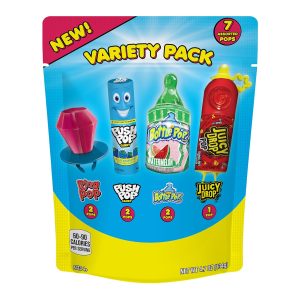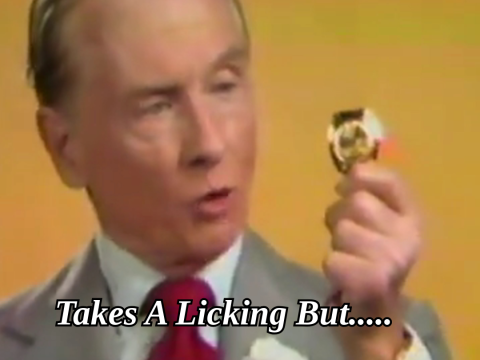If you were a kid in the late ’90s or early 2000s, odds are your childhood wasn’t just fueled by sugar—it was weaponized by it. This was the golden age of novelty lollipops: candy that doubled as a fashion statement, a toy, or sometimes just a chaotic mess in your backpack. Push Pops, Ring Pops, Baby Bottle Pops, and the short-lived Lollipop Paint Shop weren’t just treats; they were experiences. Messy, colorful, slightly dangerous experiences.

Push Pops hit shelves back in the ‘80s, but they hit their stride in the late ‘90s and early 2000s. The idea was simple: a tube of flavored hard candy you could push up and save for later. In theory. In reality, that cap was either instantly lost or coated in a layer of sticky backpack lint. And trying to bite into one after it dried out felt like gnawing on a sugar geode.
Ring Pops actually debuted in the late ’70s, invented by a man who wanted to help his child kick a thumb-sucking habit. But it was the ’90s reboot that turned them into candy royalty. Suddenly, every playground had kids strutting around like royalty, showing off their syrupy gemstones. Cool—until your fingers turned blue from the dye and the once-smooth candy started forming edges sharp enough to leave a mark.
Then there was Baby Bottle Pop, launched in 1998 and absolutely engineered for kids raised on commercials and catchy jingles. It was half candy, half toy: a baby bottle-shaped lollipop you dipped into sour powder again and again until it was crusted, sticky, and impossible to put down. The bottle shape made it feel interactive, and if you were a kid at the time, the jingle was permanently etched into your brain.
Lollipop Paint Shop followed a similar formula, taking the same powder-dipping concept and turning it into an art project gone sideways. The lollipop came in the shape of a paintbrush, and you’d dunk it into candy “paint” before brushing it across your tongue. It didn’t last long on shelves, but it was absolute chaos while it was here—finger-staining, powder-spilling, high-fructose chaos. It felt more like a craft activity than a snack.
Baby Bottle Pop and Lollipop Paint Shop shared the same core concept: interactive, hands-on candy with powder-dipping mechanics. But where Baby Bottle Pop had structure and branding, Paint Shop leaned hard into the messier, more chaotic energy—and probably stained more T-shirts in the process.
What tied all of these together was their strange obsession with hard, glassy sugar. They were fun, loud, and dangerous in a way candy just isn’t anymore. And let’s be honest—most of us walked away with blue tongues and at least one small cut from the sugar shiv left behind at the end.



